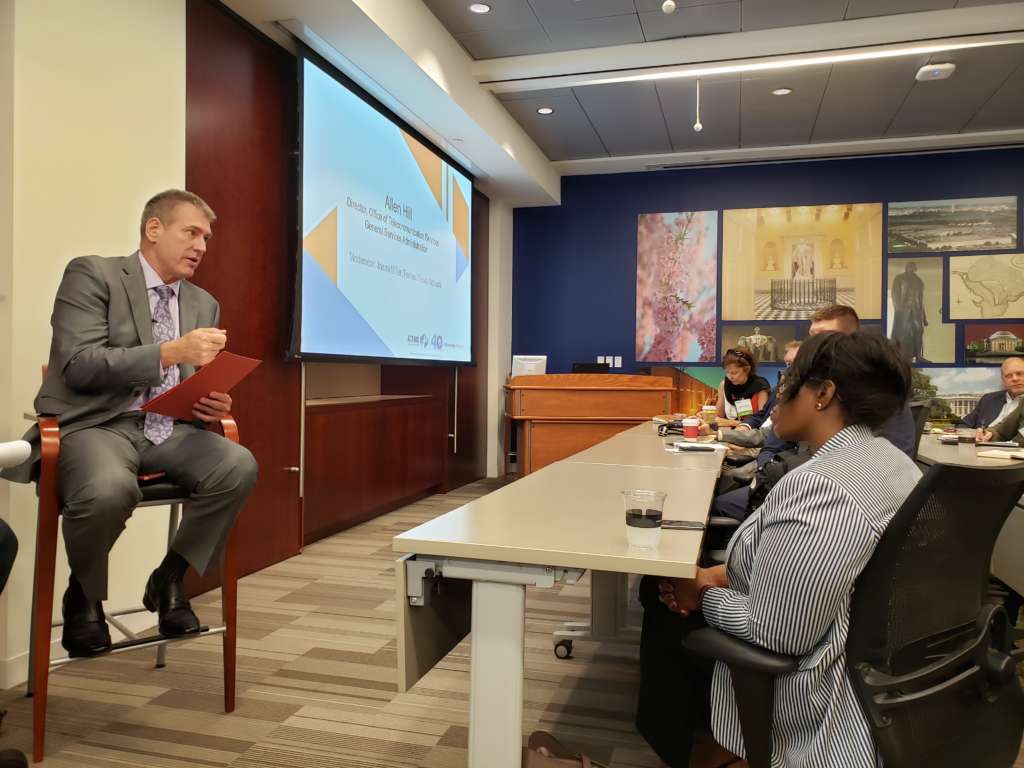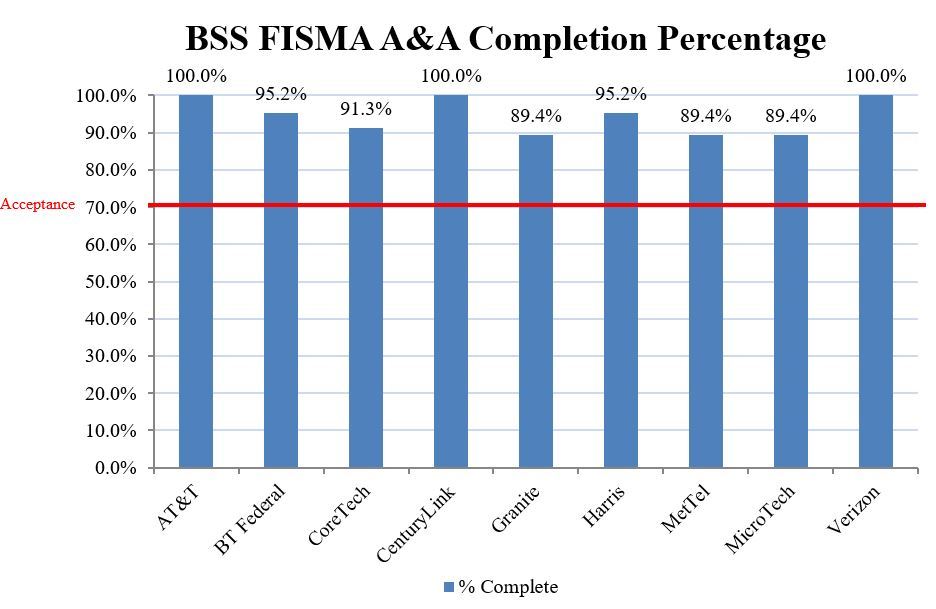

Allen Hill, the director of the Telecommunications Services Office at the General Services Administration, said most agencies will not meet the Sept. 30 deadline to...
Best listening experience is on Chrome, Firefox or Safari. Subscribe to Federal Drive’s daily audio interviews on Apple Podcasts or PodcastOne.
Transitioning to a new telecommunications contract has never been easier for the federal government. But the move to the Enterprise Infrastructure Solutions or EIS contract brings a whole new set of complexities.
Allen Hill, the director of the Telecommunications Services Office at the General Services Administration, said an agency’s network is more than just voice, video and data.
“There is no longer white and black. It’s no longer network, security and infrastructure. It’s very much gray now, the way the technologies work together,” Hill said during a recent event sponsored by industry group ACT-IAC. “[Agencies] have to understand how the technologies work and go from the traditional [ways they work] to new technologies and ensure the services continue.”

With every new telecommunications contract — FTS, FTS2001 and Networx — new technologies and new requirements have raised the bar for agencies.
EIS, however, is more than going from copper wires or plain old telephone systems (POTS) to everything over the internet. The Office of Management and Budget has charged the agencies with IT modernization through approaches like managed services and software-defined networking.
“We are really working with our industry partners to bring the types of things that are out there on the commercial side. For example, software-defined wide area networks are some of the capabilities we are bringing to bear through EIS,” he said. “Today’s network is not what we need to support the Cloud Smart initiative. We have to create a network that is based on cloud technology and that is going to take a heavy lift to do that and it will take time.”
This is why, in part, EIS is a 15-year contract.
Hill said there are some agencies that are dealing with large complex networks so moving to that network of tomorrow will be a step process.



Hill said agencies already are seeing savings between 15% and 50% or more depending on the service they are buying. He said for example if an agency buys a specific type of circuit under EIS, they may save 50% as compared to Networx. But if they bump up the speed and get more bandwidth for that same circuit, they still can save 35%.
“We need to get a lot more innovative than just transitioning to the new technologies. That is where software-defined networking will play an important role because the way data transverses the network for cloud services is not the same way it does for a tradition network,” he said.
Agencies submitted a transition plan to GSA and the Office of Management and Budget during the beginning stages of EIS some two years ago. Hill said agencies have updated those plans over the last six months with a renewed focus on program success versus technology upgrades.
“We shouldn’t get tied to technology. That is the first thing that happens that IT folks do, talk about the technology and not the business needs,” Hill said. “We need to focus on the business needs because the technology will change out and the business needs will stay the same.”
This need to focus on the programmatic and mission side of EIS may be a reason why many agencies will miss the Sept. 30 deadline to award their solicitations under EIS.
“We’ve talked at an executive level with agencies. I talked to one agency and they realized they didn’t have the modernization incorporated in their solicitation that they needed. They said let’s make sure we do this right and they pulled it back. They have now incorporated that type of modernization. That’s important because we don’t want to put something out there that is like-for-like because it defeats the whole purpose of this transition,” Hill said. “Even though the Sept. 30 date may pass for some agencies, it’s more of a yellow light type thing, ‘look folks we really need to turn it up a little bit more over the next few months and get things out there.’ Agencies are responding and buckling down.”
The other deadlines to fully transition to EIS by May 2023 and to be 90 percent on EIS by March 2022 are still in place.
GSA, however, may have to reconsider its March 31, 2020, deadline to limit the “use of the extended contracts for agencies who have not made task order awards,” as six months is not a long time to complete the hundreds of solicitations that are in the works.
“They are applying all the resources and they are working as hard as they can and we are applying all the resources to help agencies get across the finish line,” he said. “The Sept. 30 date would’ve been great to see 100% achieved, but having dealt with some of the complexities when I was at Education, things slide. When I was at Education and we were doing its transition of its predecessor contract, they actually met all their timelines even when things slide. It’s important to have things planned to make sure things so as smooth as possible.”
Hill said 54 agency solicitations have passed GSA’s scope review and so far departments have made four awards—two by the Justice Department, one by NASA and one by the Railroad Retirement Board.
He said EIS will pick up steam over the next few months keeping GSA and vendors busy.
At the same time, Hill said he still expects the remaining six of nine EIS vendors to receive their authority to operate before the end of the calendar year. In GSA’s most recent update on vendor progress, all six vendors are at 89% complete or higher.

Hill said as EIS vendors review agency requests for information they should bring to GSA’s attention anything that is missing from the acquisition strategy.
Hill said GSA is providing tools and resources to help agencies to automate the development of its fair opportunity solicitation, and technical experts to ask questions about cloud computing or other emerging technologies.
“We are bringing on even more experts. We are making some key hires who are government personnel and are technical experts in areas like solutions architects and networking to even better help agencies,” he said. “As agencies move to these new services, it’s very apparent because of the technology they don’t necessarily have the skills on staff to support that. That’s why it’s important to look at as-a-service managed network services to help them because software-defined networking is not the same thing as the regular router switch guy. You have different skillsets. It’s a lot more complex.”
Copyright © 2025 Federal News Network. All rights reserved. This website is not intended for users located within the European Economic Area.
Jason Miller is executive editor of Federal News Network and directs news coverage on the people, policy and programs of the federal government.
Follow @jmillerWFED
